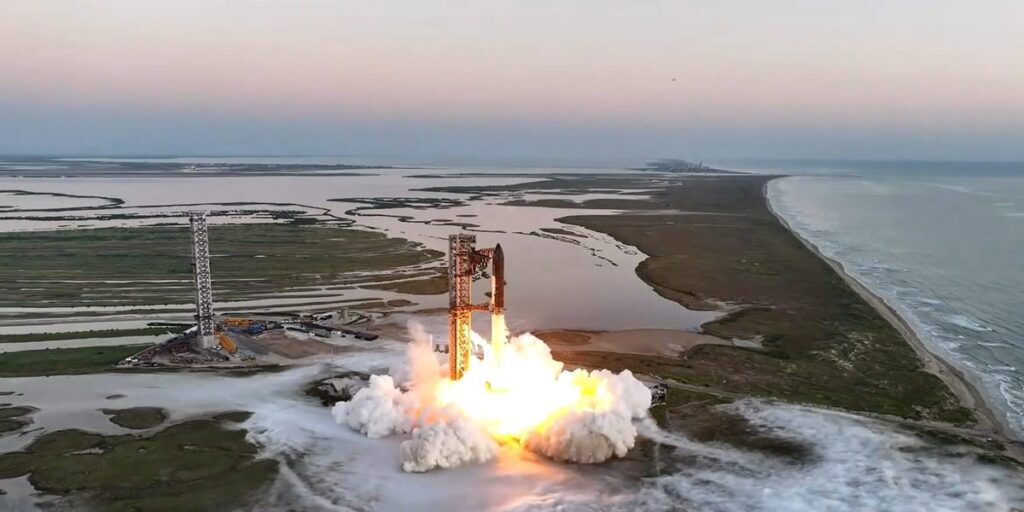- SpaceX’s Starship completed its fifth flight test on Sunday.
- The company achieved its main goal of catching the booster back at the launch site.
- The upper stage also successfully returned to Earth, landing in the Indian Ocean.
SpaceX has carried out its fifth flight test of Starship, the world’s most powerful rocket that Elon Musk hopes will one day take humans to Mars.
The spacecraft launched on Sunday shortly after 8 a.m. ET in Boca Chica, Texas.
The test made history as it marked the first time the spacecraft’s Super Heavy booster was returned and caught at the launch site.
The booster separated from the upper stage of the rocket just under three minutes after takeoff. It then returned to the launchpad, where it was caught by “chopsticks” on the launch tower.
The next stage of the test involved monitoring the rocket’s upper stage as it descended back into the Earth’s atmosphere.
The upper stage made a controlled reentry to Earth, landing in the Indian Ocean at around 9:30 a.m. ET.
It follows a successful fourth flight test in June, which saw both the Super Heavy booster and the upper stage of the rocket land in the ocean after launch.
The booster landed in the Gulf of Mexico after breaking away from the upper stage, while the latter eventually landed in the Indian Ocean after re-entering the atmosphere.
According to SpaceX’s website, the fifth flight test aimed to take the spacecraft “another step towards full and rapid reusability.”
The spacecraft underwent several major upgrades ahead of the flight test on Sunday, including a rework of its heat shield.
SpaceX said its technicians spent 12,000 hours replacing Starship’s thermal protection system with “newer-generation tiles, a backup ablative layer, and additional protections between the flap structures.”
“This massive effort, along with updates to the ship’s operations and software for reentry and landing burn, will look to improve upon the previous flight and bring Starship to a soft splashdown at the target area in the Indian Ocean,” the company said.
SpaceX’s Crew-8 mission to undock from the International Space Station and return to Earth was also due to begin on Sunday.
But the company said unfavorable weather conditions off the coast of Florida — the planned landing site — meant SpaceX and NASA were “standing down.”
“Teams will continue to monitor weather conditions for the next available opportunity,” the company said.
Read the full article here


